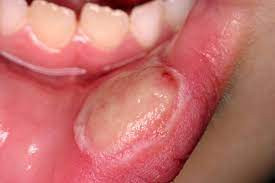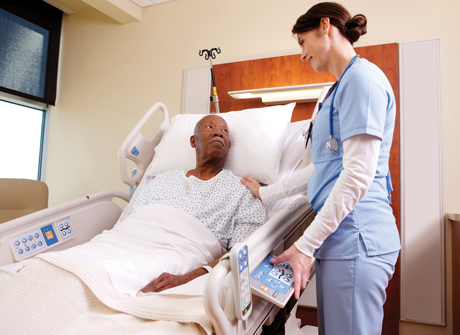Definition
An ulcer is a painful wound that develops on the skin, mucous membranes, or tissue surface. It can appear anywhere in the body or on the surface of the skin. Ulcers can be superficial or reach deeper layers of skin or tissue under the skin.
Ulcers are not uncommon. However, the presence of an ulcer indicates the presence of a disease or medical condition.
Causes
There are several types of ulcers based on the underlying cause, such as:
- Mouth ulcers (canker sores). Causes include:
- Stress
- Hormonal changes
- Vitamin deficiency, especially thiamine or vitamin B1, as well as other vitamins
- Bacterial infection
- Other diseases or medical conditions
- Arterial ulcers (ischemia). The cause of these ulcers is damage to the blood vessels resulting in reduced blood flow to the tissues. These ulcers are also sometimes found in the intestines of people who are very ill and have low blood pressure
- Venous ulcers. These ulcers usually form due to damage to the veins, which leads to impaired blood flow back to the heart. Examples of venous diseases that can cause venous ulcers are varicose veins and chronic venous insufficiency. The presence of ulcers in patients with varicose veins is caused by circulatory disorders in the skin
- Infections, such as tuberculosis or syphilis bacterial infections can cause ulcers on any body surface. Herpes simplex virus infection can also cause superficial ulcers on the lips. Any infection under the skin, such as a boil, can penetrate the skin surface and form an inflamed ulcer
- Nerve damage, for example in people with diabetes mellitus (DM). In DM, ulcers develop on the feet or toes due to nerve damage that causes loss of sensation or feeling
- Trauma, such as burns from fire or electricity and frostbite
- Some cancers are characterized by ulcers that can develop in the stomach, small intestine, colon, and rectum
- Bedrest. People who are bedridden for long periods may develop decubitus ulcers or bedsores. These ulcers usually occur in areas that are under pressure, such as the skin of the back, pelvis, and heels
- Peptic ulcer. This condition is quite common. The most common cause of peptic ulcers is inflammation due to Helicobacter pylori bacterial infection or long-term consumption of non-steroidal anti-inflammatory drugs (NSAIDs). There are two types of peptic ulcers, namely:
- Gastric (stomach) ulcers, which occur on the inner mucous membrane of the stomach
- Duodenal (small intestine) ulcers, which occur on the mucous membrane of the inner small intestine
- Genital ulcers. These ulcers occur on the genitalia, such as the penis, vagina, anus, and surrounding areas. They are usually caused by sexually transmitted infections, but can also be caused by trauma, inflammatory diseases, or Epstein-Bar virus infection.
Risk factor
In general, the risk factors for ulcers are:
- Old age
- Smoking
- Unhealthy diet
- Lack of oral hygiene
- Risky sexual behavior
- Malnutrition or undernutrition
- Diabetes
- Hypertension
Symptoms
Different types of ulcers will result in different ulcer characteristics, namely:
- Arterial (ischemic) ulcers. These ulcers mainly appear on parts of the body that are supplied by small blood vessels or capillaries. They most commonly occur on the outside of the ankles, feet, toes, and heels. Healing of these ulcers can take up to months and requires appropriate therapy to prevent infection and further complications. Arterial ulcers have a prominent shape and are accompanied by symptoms such as:
- Reddish, yellow, or black wounds
- Hairless skin
- Leg or foot pain
- No bleeding
- The ulcer area is cold to the touch due to a lack of blood circulation to the area
- Venous ulcers. This type of ulcer is the most common. They usually occur on the leg, below the knee, and on the inner area of the ankle. In some cases, venous ulcers cause mild pain or no pain at all. In other cases, they can be very painful. Venous ulcers can take several months to heal completely. In rare cases, these ulcers may not heal. Other symptoms of venous ulcers are:
- Inflammation
- Swelling
- Itching of the skin
- Scabbing
- Discharge of fluid from the ulcer
- Peptic ulcer. The most common symptom of peptic ulcer is a burning sensation. Other symptoms include:
- Bloating or a feeling of fullness in the stomach
- Nausea
- Vomiting
- Burping
- Hiccups
- Weight loss for no apparent reason
- Chest pain
- Mouth ulcers. These are characterized by small sores on the mouth or gums that are painful. Usually, mouth ulcers will resolve on their own within 2 weeks. Mild mouth ulcers cause small, round wounds that heal without leaving a scar. In severe cases, the wound will grow larger and deeper. Several symptoms that indicate serious mouth ulcer are:
- Slow healing (more than 3 weeks)
- The ulcer reaches the lip
- Impaired eating or drinking
- Fever
- Diarrhea
- Genital ulcers. In addition to wounds in the genitalia area, other symptoms that may arise in genital ulcers include:
- A rash or lump on the affected area
- Pain or itching
- Swollen lymph nodes in the thigh
- Fever
- Cancerous ulcer. An ulcer that does not heal and is hard to the touch is characteristic of cancer. The chances of cancer are greater in older people. Ulcers on the border of the lower lip in older men are often cancerous. This contrasts with shallow ulcers on the lip that are caused by herpes and are harmless.
Diagnosis
Skin ulcers can usually be diagnosed by a doctor's physical examination. However, the doctor will proceed with other examinations to determine the underlying disease that caused the ulcer. Meanwhile, ulcers on internal organs, such as the stomach, require radiology or endoscopy for a definitive diagnosis.
Management
Management for ulcers varies depending on the cause.
- Arterial ulcers. Treatment for arterial ulcers depends on the cause. Therapy aims to restore blood circulation to the affected area. Antibiotics may help reduce symptoms. A surgical procedure may be suggested to improve blood flow to tissues and organs. In severe cases, amputation may be required
- Venous ulcers. Venous ulcer treatment focuses on improving blood flow to the affected area. Antibiotics may be used to help prevent infection and reduce symptoms, but they are not enough to cure venous ulcers. In addition to medication, surgery or compression therapy may also be recommended to improve blood flow back to the heart
- Peptic ulcer. Treatment depends on the cause of the ulcer. If the cause is H. pylori infection, antibiotics will be prescribed to kill the bacteria. In addition, the general treatment of peptic ulcers is with stomach acid-lowering medications to protect the mucous membrane of the stomach from acid and thus facilitate wound healing
- Mouth ulcers. These ulcers usually resolve on their own without treatment. If pain is present, your doctor or dentist will prescribe a mouthwash or antimicrobial ointment to reduce the pain
- Genital ulcers. As with other types of ulcers, treatment for genital ulcers depends on the cause. In some cases, the ulcer will resolve on its own. If the ulcer is caused by a sexually transmitted infection, your doctor will prescribe antivirals or antibiotics
- Ulcers suspected of cancer should be further examined and treated quickly before they spread and become inoperable
Complications
Frequent and possible complications of ulcers include non-healing ulcers, recurrent ulcers, bleeding ulcers, and infection. These complications can be mild to severe and life-threatening.
Prevention
Most ulcers can be prevented. The method of prevention depends on the type of ulcer. In general, adopting a healthy lifestyle can prevent or reduce the risk of developing ulcers. Genital ulcers can be prevented by abstaining from casual sex or using protection during sexual intercourse.
When to see a doctor?
Some ulcers, such as peptic ulcers and genital ulcers, may resolve on their own but may later recur despite treatment. If you have an ulcer or wound that does not heal and the cause is unclear, you should consult a doctor immediately.
Looking for more information about other diseases? Click here!
- dr Nadia Opmalina
Ulcer | pathology. Encyclopedia Britannica. (2022). Retrieved 7 June 2022, from https://www.britannica.com/science/ulcer
Types of Ulcers: Symptoms and Treatment. Healthline. (2022). Retrieved 7 June 2022, from https://www.healthline.com/health/types-of-ulcers#takeaway
Skin ulcer: Causes, types, symptoms, and treatments. Medicalnewstoday.com. (2022). Retrieved 7 June 2022, from https://www.medicalnewstoday.com/articles/324466












